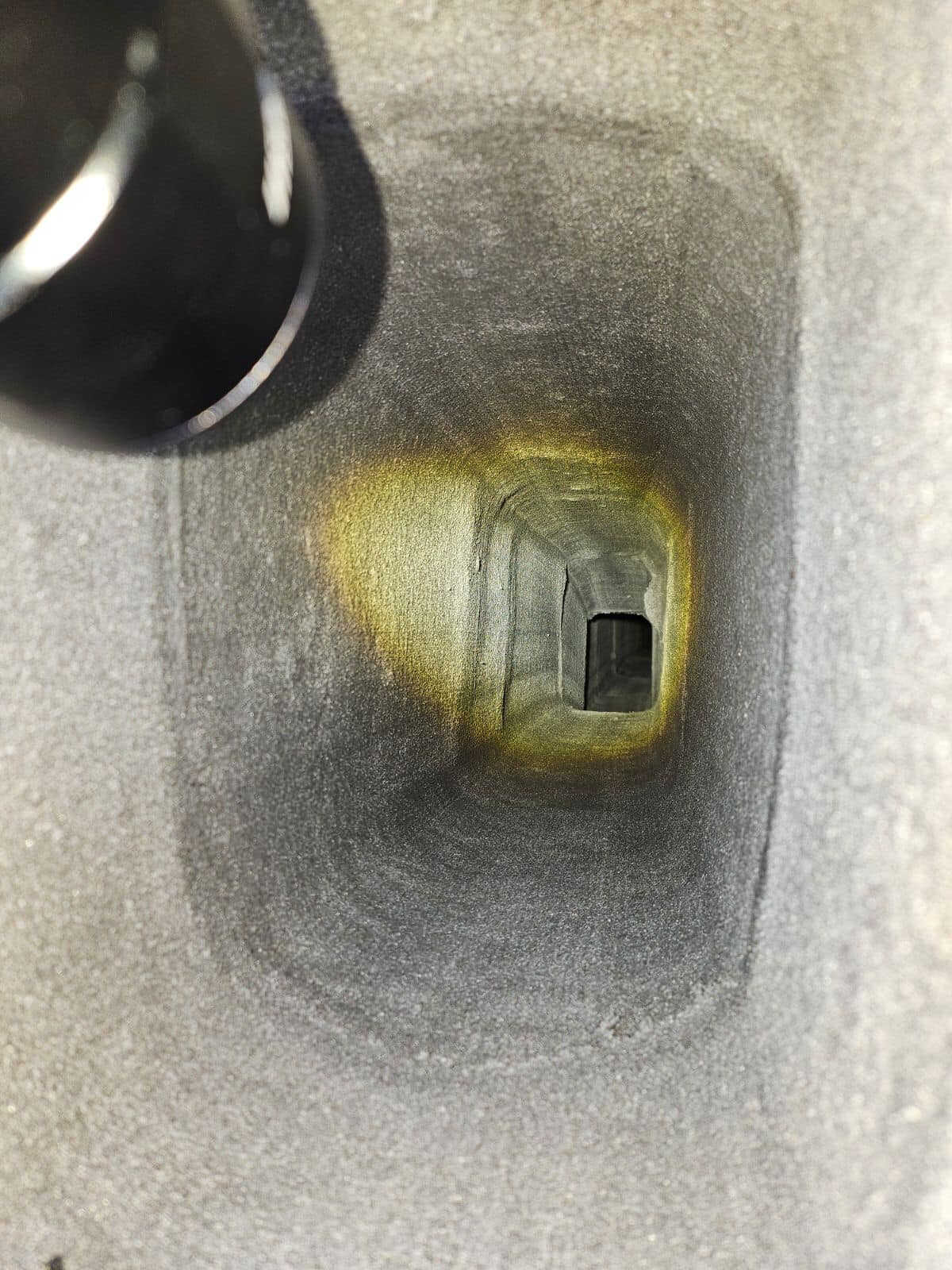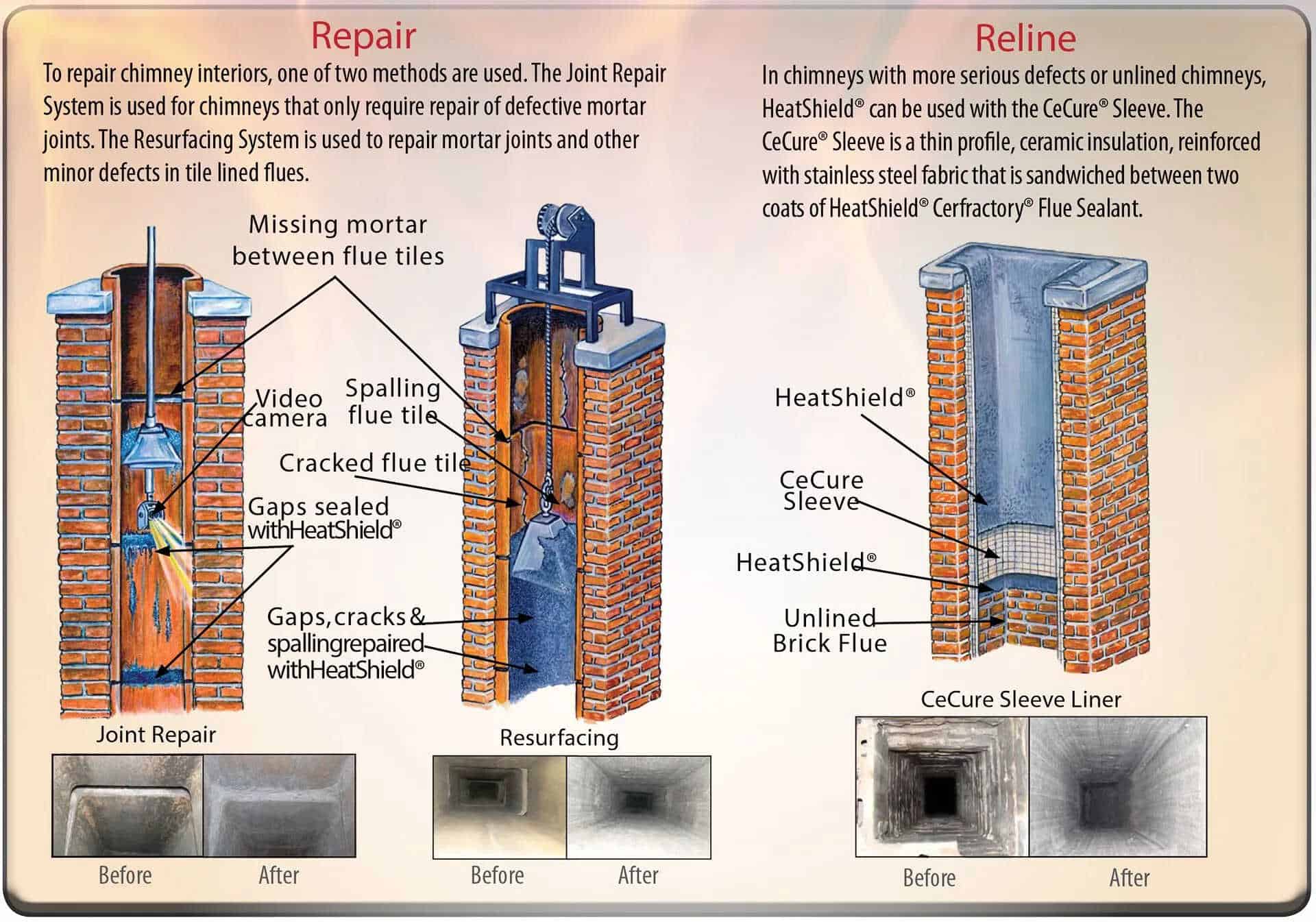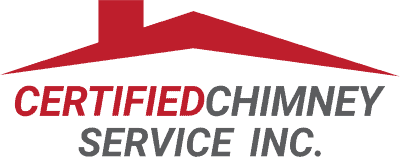Certified HeatShield® Installers in Nassau, Suffolk, NYC, Westchester & Putnam
Restore Your Chimney's Integrity with HeatShield®
Boosts Performance
Improves your chimney's efficiency by sealing gaps and cracks, ensuring optimal operation.
Enhances Safety
Eliminates potential hazards by restoring the structural integrity of your chimney's flue.
Eco-Friendly Solution
An economical and environmentally friendly alternative to extensive chimney repairs or rebuilds.
Anatomy of Your Chimney
Whether your chimney is used to vent a fireplace, woodstove, or furnace, most have sections of clay flue tile stacked one above the other to form a liner called the flue. The flue liner should be tightly sealed to protect the integrity and efficiency of your chimney. But over time, hidden dangers can develop that will compromise the safety and efficiency of your chimney.
Are There Hidden Dangers in Your Chimney?
Cracked Flue Tiles
Flue tiles crack due to “sudden occurrences” such as a chimney fire, lightning strike, or seismic event. Cracks may also be caused by poor workmanship or settling of your home.Gaps Between Flue Tiles
The combustion process creates noxious gases that can contain creosote/soot, carbon monoxide, and corrosive chemicals. The purpose of your chimney is to safely vent hazardous flue gases from your home. Flue tiles are typically sealed with mortar to keep these gases within the flue. But over time, the mixture of heat, moisture, and chemicals, will erode the mortar, leaving gaps or voids between flue tiles.Flaking Flue Tiles (Spalling)
Years of exposure to corrosive chemicals and moisture from combustion can attack clay flue tiles, causing pieces of the flue liner to flake off or delaminate, a process called spalling.How These Hidden Dangers Can Affect You
Fire & Health Risks:
These defects, no matter how small, begin a process that will further erode the chimney and can pose a threat to your family’s health. When heat, moisture, and gases escape through gaps or cracks in your chimney, they deteriorate your chimney from the inside out. More importantly, the gaps and cracks can cause health risks, by allowing poisonous gases to escape into your home. Combustible creosote or soot can escape through these openings and build up outside the flue liner. If the creosote were to catch fire in this area of your chimney, serious damage can occur, because the fire can no longer be contained within the flue. Pieces of flue tile that flake off due to spalling, can form dangerous blockages within your chimney.
Loss of Efficiency: To work correctly and efficiently, chimneys must be gas tight and free of gaps and cracks. Gases rising up through your chimney are similar to liquid being sipped through a straw. If the straw has a crack or hole in it the liquid will not flow effectively through it. Gaps or cracks allow excess air into your chimney, slow the updraft and make it harder for smoke and gases to rise up and out. Hence, the fireplace, woodstove, or furnace will perform poorly, resulting in loss of heat efficiency.
Loss of Efficiency: To work correctly and efficiently, chimneys must be gas tight and free of gaps and cracks. Gases rising up through your chimney are similar to liquid being sipped through a straw. If the straw has a crack or hole in it the liquid will not flow effectively through it. Gaps or cracks allow excess air into your chimney, slow the updraft and make it harder for smoke and gases to rise up and out. Hence, the fireplace, woodstove, or furnace will perform poorly, resulting in loss of heat efficiency.

Chimney Safety Institute of America
According to the CSIA (csia.org), problems such as gaps, cracks, and spalling in your chimney’s flue can present serious risks to your home and family, because your chimney can no longer perform its intended function– to safely contain and vent the products of combustion to the outside.
Building Codes Building codes and fire standards require that chimneys are structurally sound, durable, smoke tight and capable of conveying flue gases to the outside completely and safely.
National Fire Protection Association (NFPA) “If the flue liner in a chimney has softened, cracked or otherwise deteriorated so that it no longer has the ability to contain the products of combustion (i.e., heat, moisture, creosote, and flue gases), it shall be removed and replaced, repaired or relined…” NFPA 211- Standard for Chimneys, Fireplaces, Vents, and Solid Fuel-Burning Appliances (2006).
Building Codes Building codes and fire standards require that chimneys are structurally sound, durable, smoke tight and capable of conveying flue gases to the outside completely and safely.
National Fire Protection Association (NFPA) “If the flue liner in a chimney has softened, cracked or otherwise deteriorated so that it no longer has the ability to contain the products of combustion (i.e., heat, moisture, creosote, and flue gases), it shall be removed and replaced, repaired or relined…” NFPA 211- Standard for Chimneys, Fireplaces, Vents, and Solid Fuel-Burning Appliances (2006).
HeatShield® Restores Your Chimney
HeatShield® is a specially formulated “Cerfractory®” sealant material that restores the integrity of your chimney’s flue to vent hazardous flue gases from your home. It eliminates the dangers in your chimney caused by gaps, cracks, and spalling for years to come. By using either the Repair System or the CeCure® Sleeve Relining System (depending on the defects found) your chimney will be restored to its original peak level of safety and efficiency.

Heat Tested
Developed in Europe over 20 years ago, HeatShield’s Cerfractory® technology is a hybrid (ceramic/refractory) coating and proven effective both in use and by independent lab testing. As a repair, it’s been proven to withstand moisture, corrosive flue gases, and temperatures in excess of 2900°F. It’s rated a “Super-Duty” refractory mortar per ASTM (American Society for Testing and Materials) C199. It surpasses both National Fire Prevention Association (NFPA) and International Residential Code (IRC) which require only a “Medium-Duty” refractory mortar for use in fireplaces and chimneys. It is an approved “all fuel” chimney liner and listed to UL 1777 by Warnock Hersey with the addition of the CeCure Sleeve. To learn more about HeatShield’s® extensive testing, listing, and certification visit CeCureChimney.com.
See All Services
Menu
Still have questions?
Don’t Hesitate to Reach Out – We’re Here to Help Every Step of the Way
Testimonials
See Why Homeowners Trust Certified Chimney

